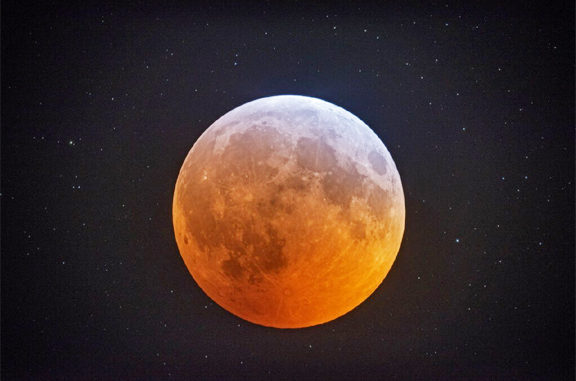
WASHINGTON (TIP): Sky watchers have a lot to look forward to in 2021, with three “supermoons,” one blue moon and two lunar eclipses all taking place during the new year.Astronomy experts say the three supermoons — full moons that appear to be slightly bigger and brighter than a typical full moon because of their closer orbit to Earth — will be rising in the sky during consecutive months: April, May and June.The last time we saw a supermoon trifecta was during the first three months of 2019. After that, two supermoons appeared in 2020, one in March and one in April.While 2020 featured a rare Halloween “blue moon” — the second of two full moons during the same calendar month — the blue moon that will be appearing in 2021 is a different type of blue moon. The Aug. 22 full moon will be considered a seasonal blue moon, which is the third of four full moons appearing during the same season. In this case, it will be the third full moon of summer. (The others are June 24, July 23 and Sept. 20.)
West Michigan Spring 2020
Three supermoons are on tap in 2021. Pictured here is a supermoon rising over Kalamazoo, Michigan, on May 7, 2020.Joel Bissell
Total lunar eclipse in May
Some astronomy experts, including Brian Lada at AccuWeather, are billing the May lunar eclipse as “the best astronomical event of all of 2021.”
The total eclipse will occur during the morning of May 26, when the Earth’s shadow will block the sun’s light from shining on the moon’s surface as all three celestial bodies line up in a straight row. During the eclipse, the moon’s color will grow darker and appear to be a rusty-reddish tint, which is why some sky watchers will call it a “blood moon.” The May full moon is normally nicknamed the “flower moon,” because that’s the time of year when many plants are blooming. But this year it will garner many nicknames, including the blood moon, supermoon or super blood moon. Note: Because of its morning timing, only part of this lunar eclipse will be visible in the eastern United States and most areas of North America, according to AccuWeather and other experts.
“The total eclipse itself will only be visible from the High Plains, the Rocky Mountains and the Pacific Coast” in the United States, AccuWeather says. “The eclipse will also be visible for parts of South America, Asia and eastern Asia.”
moon photos
The moon often appears to be reddish-orange during a lunar eclipse, which is why many sky watchers call it a “blood moon.” This image was snapped during a lunar eclipse in Mercer County in December 2010.SL
Partial lunar eclipse in November
Even though a second lunar eclipse in November 2021 will be a partial one instead of a total one, sky watchers in the eastern United States should get a very good view, AccuWeather says, assuming the skies are clear at the time.
You’ll also need to wake up early to see it.
The partial lunar eclipse will occur during the pre-dawn hours on Nov. 19, when the moon will officially be at its fullest phase — shortly before 4 a.m. Eastern time.
“November’s lunar eclipse will be very close to a total lunar eclipse, with just a sliver of the moon missing Earth’s dark inner shadow,” AccuWeather notes. “Because of this, it may be possible for the moon to briefly appear rusty orange or red, similar to what occurs during the height of a total eclipse.”





Be the first to comment